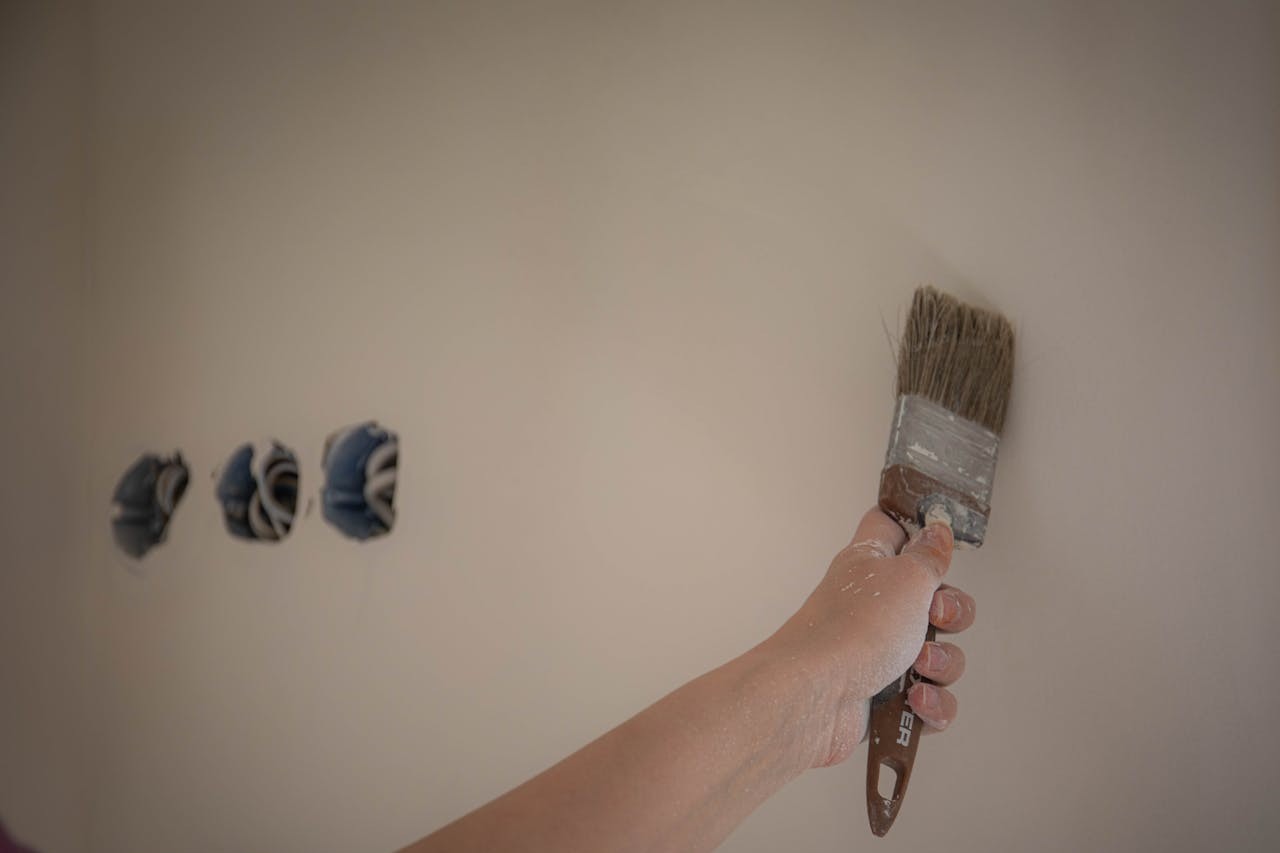7 Colors Designers Warn You Should Never Paint Your Living Room

Choosing the right paint color for your living room is crucial, as it sets the tone for the entire space. The color you choose can impact the ambiance, make the room feel more spacious or cozy, and even influence your mood. However, some colors, while they may seem appealing at first, can have the opposite effect, making the room feel cramped, cold, or overwhelming. Interior designers often recommend avoiding certain shades that can negatively affect the vibe of your living room. In this article, we’ll explore seven colors that designers warn you should never paint your living room. These colors may seem like great choices, but they can create an uncomfortable or unbalanced environment. Let’s dive into why these colors should be avoided.
1. Bright Red

Bright red is a bold and attention-grabbing color, but it’s one that can overwhelm a living room. Red is known for its energizing and stimulating qualities, but in large doses, it can also make a room feel tense or aggressive. In a space that’s meant to be relaxing and welcoming, bright red can create the opposite effect. It can even make the room feel smaller and more cramped, especially in spaces with limited natural light. Designers recommend using red as an accent color rather than as the main hue for your walls. It works beautifully in small doses, such as in throw pillows, rugs, or artwork, where it can provide a pop of energy without overpowering the space. For a more balanced approach, opt for deeper shades of red, like burgundy, which can add warmth without being too intense.
2. Dark Brown

Plain dark brown product background
While brown is often associated with warmth and coziness, dark brown can have the opposite effect when used on living room walls. Dark shades of brown can make a room feel smaller and more enclosed, which is not ideal for a space that should feel open and inviting. Dark brown walls absorb light, making the room feel heavy and somber. If your living room lacks natural light, dark brown can exacerbate this issue, making the space feel even more dim and claustrophobic. Instead of dark brown, consider using lighter shades of brown, such as taupe or beige, which can still create a warm, earthy feel without overwhelming the room. These lighter tones also allow more light to bounce around the space, creating a brighter and more welcoming atmosphere.
3. Neon Shades

Neon colors like bright pink, electric green, vivid yellow, and neon orange are often associated with excitement and energy, but they can be jarring when used on living room walls. These colors are bold and attention-grabbing, but in a living room, they can create an overwhelming and chaotic environment. Neon shades can also clash with furniture and decor, making it difficult to achieve a cohesive design. While neon colors can be fun in small doses, such as in throw pillows or accessories, they should be avoided as the main wall color. Instead, opt for softer, more subdued tones that still add personality to the space. If you want to add a pop of color, consider using neon accents or artwork to bring energy into the room without overwhelming it.
4. Dark Purple

Dark purple is another color that can create a dramatic and intense atmosphere, but it’s not always the best choice for a living room. While purple is often associated with luxury and sophistication, dark purple can make a room feel smaller and more closed off, especially in spaces with limited natural light. Dark shades of purple can also make the room feel heavy and oppressive, which is not ideal for a space that should promote relaxation and socializing. If you love purple, consider using lighter shades like lavender, lilac, or soft mauve. These colors can add a touch of elegance and tranquility to the room without overwhelming the space. Lighter purples also help to create a more open and airy feel, making the room feel more expansive.
5. Black

Black walls can look sleek and sophisticated in certain settings, but they can make a living room feel dark, cold, and uninviting. Black absorbs light, which can make the room feel gloomy and oppressive, especially in spaces that lack natural light. While black can work well as an accent color or in smaller doses, it should be avoided as the primary color for your living room walls. If you’re drawn to a moody, dramatic look, consider pairing black with lighter shades like white, gray, or metallic accents to balance the space. This combination can create a stylish and contemporary feel without making the room feel too dark or claustrophobic. Remember, the goal of a living room is to create a space that feels welcoming and comfortable, and black walls can make that difficult to achieve.
6. Bright Yellow

Bright yellow is a cheerful and sunny color, but it can be overwhelming when used on living room walls. While yellow is known for its ability to brighten a space and lift your mood, too much of it can have the opposite effect. Bright yellow can create a sense of restlessness and agitation, which is not ideal for a space that should promote relaxation and comfort. When used on the walls, bright yellow can make the room feel chaotic and uncomfortable, making it difficult to unwind. Instead of bright yellow, consider using softer, more muted shades like buttery yellow, pale gold, or warm mustard. These shades can add warmth and lightness to the room without being overpowering. They create a more soothing and inviting atmosphere, perfect for a living room.
7. Olive Green

Olive green may seem like a neutral, earthy tone, but it can create a dull and dated look in your living room if not used carefully. While olive green can work well in certain design schemes, it can also make the space feel stagnant and uninspired. When used on walls, olive green can make the room feel closed off and less inviting. It’s a color that can be difficult to pair with other hues, and it can sometimes create an outdated or stuffy vibe. If you’re drawn to green tones, consider opting for lighter, fresher shades like sage, mint, or seafoam green. These shades can add a sense of calm and tranquility to the space, creating a more modern and uplifting atmosphere. Lighter greens also work well with a variety of other colors, making them easier to incorporate into your design.
Final Thoughts

Choosing the right paint color for your living room is essential for creating a space that feels welcoming, relaxing, and stylish. While some colors may seem appealing at first, they can have a negative impact on the overall ambiance of your room. Bright red, dark brown, neon shades, dark purple, black, bright yellow, and olive green are all colors that designers recommend avoiding in your living room. Instead, consider opting for lighter, more neutral tones or using bold colors as accents to create a balanced and inviting space. By carefully selecting the right colors, you can transform your living room into a place where you’ll love spending time. Remember, the goal is to create a space that feels open, welcoming, and comfortable—so choose your paint colors wisely to achieve the perfect atmosphere for your home.
Leave a Reply